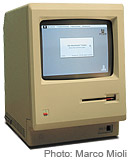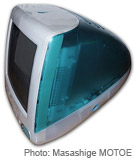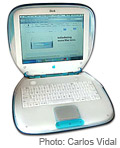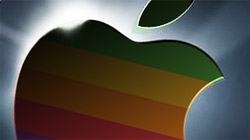Just
about everyone views Apple as the computer industry’s innovative
leader. Consumers drool over their products and competitors shake their
fists with envy. Even with that said, do we still not truly understand
how much they play a role in jump-starting technology trends?
It’s mind-boggling how many bold moves Apple has made over the past
25 years to keep the Mac at the forefront of the personal computer
market. Even with their small (but recently growing) market share, Apple
is arguably the most influential player in technology. Whereas other
companies are often afraid of moving forward due to investment risks and
backwards compatibility concerns, Apple never slows down and is
constantly adopting new technologies. They’re usually met with
skepticism at first, but a few years later everyone is following in
their footsteps.
To illustrate this point, I thought it would be a fun idea to go
through some of the new features Apple has introduced over the years
which have now become industry standards. Take a look at this list and
consider where we might be today if Apple had never brought these big
changes to mainstream computer buyers.
 1. Graphical User Interface
1. Graphical User Interface
No, Steve Jobs and the team at Apple weren’t the first to create a
graphical user interface (GUI) for a computer. It was Xerox who had been
experimenting with it for quite some time, but were struggling to make a
consumer product out of it. Once Apple stepped in and took their own
stab at it, the modern computer desktop with icons and windows was born
with the original Macintosh in 1984.
2. Introducing the mouse
Since the Macintosh was not text-based like other computers at the
time, the keyboard needed a partner. With a revolutionary pointing
device called a mouse, users could point and click on elements on their
screen. We may take it for granted now, but it was kind of a big deal at
the time.
3. Touchpads go portable
Just like the mouse in 1984, Apple also brought the industry’s other
main pointing device to the masses with the PowerBook 500 series in
1994. Before trackpads, bulky trackballs were used in laptops.
Touch-sensitive trackpads are still in use today and Apple continues to
innovate in this space with the glass Multi-Touch trackpads included on
their new unibody MacBooks.
 4. USB as the standard
4. USB as the standard
Replacing the massive serial ports of the past, the original iMac in
1998 was the first computer to include USB ports as the standard
connector for peripherals like keyboards, mice, printers, etc. Nowadays
USB is used for even more purposes, including digital cameras, scanners,
iPods, and storage devices among others.
5. Bye-bye floppy
In 1998, it was inconceivable to sell a mainstream computer with no
3.5″ floppy disk drive. And yet, in the name of progress that is exactly
what Apple did with the original iMac. Correctly predicting the future
would favor higher-capacity CDs/DVDs and the internet, they were way
ahead of the rest of the industry with their decision to dump the floppy
drive. Sound familiar to the controversial MacBook Air sans optical
drive? Sure does.
6. A decade of FireWire
FireWire, a faster and arguably better alternative to USB created by
Apple, was first made available in 1999 with the Power Mac G3. FireWire
is a major contribution to the tech world, having seen widespread use in
the video editing and data storage industries for both Macs and PCs.
Still, the stronger push given to USB has made it far more popular with
consumers.
 7. Look mom, no wires!
7. Look mom, no wires!
As if the trackpad wasn’t enough to boast about, Apple’s portables
were also the first to be sold with integrated wireless networking
capabilities. Specifically, it was the iBook G3 in 1999 that essentially
brought WiFi to the world. With an amusing Steve Jobs and Phil Schiller
keynote demonstration, internet to go became a reality.
8. Mega-fast gigabit ethernet
With the introduction of the Power Mac G4 in 2000, Apple became the
first company to offer gigabit ethernet as a standard feature on their
computers. Shockingly, many of Apple’s competitors still don’t use the
fast network interface card as the standard on their products — nine
years later.
9. CRT kicked to the curb
While LCD screens have mostly been the norm for the past five years
or so, those old clunky CRT monitors are still floating around. Not at
Apple headquarters, though. The Mac-maker was the first computer company
to completely drop CRTs from their product lineup in 2006 — a plus for
both the environment and our desks.
 10. DisplayPort for the future
10. DisplayPort for the future
With the unveiling of Apple’s updated notebooks in October 2008, it
was announced that the license-free DisplayPort would soon be used as
the standard video-out connector on all new Macs. That means VGA and DVI
are gone for good. Old monitors will still work with the help of video
adapters, but Apple’s again looking towards the future here. This is
still a touchy subject for some people (as was most of this list at some
point) and it remains to be seen whether it will really take off as
expected. Other companies (Intel, Dell, HP, Lenovo, Samsung, NVIDIA,
etc.) have already expressed commitment to the standard, however, and
given Apple’s track record I wouldn’t bet against their choice to adopt
it first.

 1. Graphical User Interface
1. Graphical User Interface 4. USB as the standard
4. USB as the standard 7. Look mom, no wires!
7. Look mom, no wires! 10. DisplayPort for the future
10. DisplayPort for the future